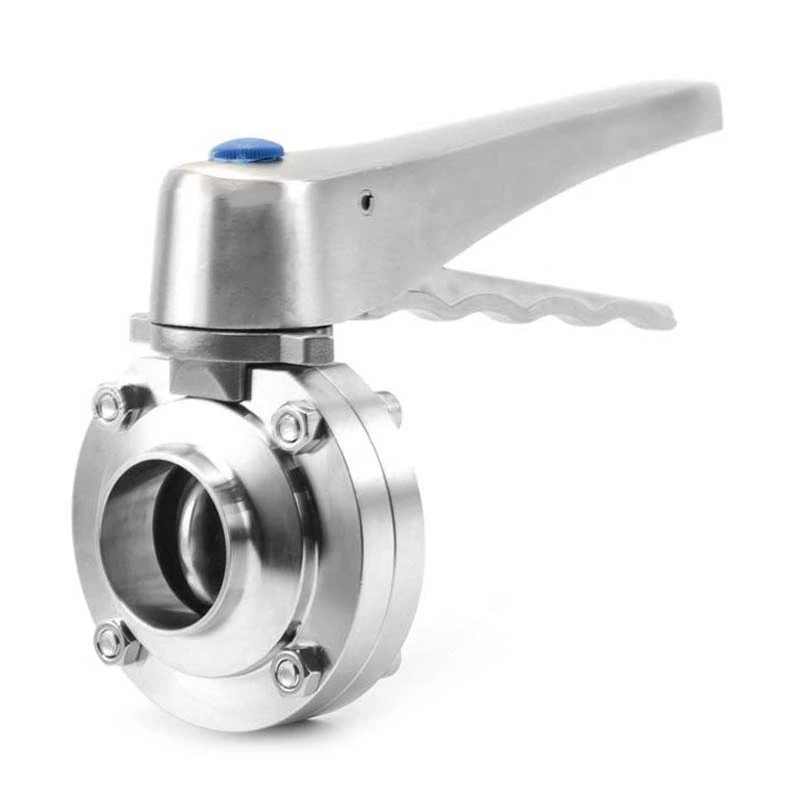Common Faults Of Pneumatic Butterfly Valves And Their Solutions
Common faults and solutions for Sanitary Butterfly Valve
1. Testing and adjustment of pneumatic butterfly valves
1. Whether it is manual, pneumatic, hydraulic or electric, all parts of the butterfly valve are strictly debugged before leaving the factory. When rechecking the sealing performance, the user should evenly fix both sides of the inlet and outlet, close the butterfly valve, apply pressure to the inlet side, and observe whether there is leakage on the outlet side. Before the strength test of the pipeline, the disc plate should be opened to avoid damage to the sealing pair.
2. Although the butterfly valve is strictly inspected and tested before leaving the factory, there are also individual products that automatically shift the screw during transportation and need to be readjusted, pneumatic, hydraulic, etc. Please read the operating instructions of the supporting drive device.
3. The opening and closing strokes of the control mechanism of the electric transmission butterfly valve have been adjusted before leaving the factory. In order to avoid the wrong direction when the power is turned on, the user should first open the manual to the half-open position after turning on the power for the first time, and then press the electric switch to check whether the direction of the indicator disk is consistent with the valve closing direction.
2. Common faults of butterfly valves and their elimination methods
1. Before installation, check whether the performance of our product and the medium flow direction arrow are consistent with the working conditions, and clean the inner cavity of the valve. It is not allowed to have foreign matter attached to the sealing ring and butterfly plate. It is not allowed to close the butterfly plate before cleaning to avoid damaging the sealing ring.
2. The flange for the disc plate installation is recommended to use a special flange for butterfly valves, that is, HGJ54-91 socket welding steel flange.
3. The position of the installation in the pipeline is the best position to be vertical, but not inverted.
4. The flow needs to be adjusted during use, and there is a worm gear box for control.
5. For butterfly valves with a large number of openings and closings, open the worm gear box cover every two months to check whether the butter is normal, and keep an appropriate amount of butter.
6. Check that each connection part requires tightness, which can ensure the honeycomb of the packing and the flexible rolling of the valve stem.
7. Metal-sealed butterfly valves are not suitable for installation at the end of a pipeline. If they must be installed at the end of a pipeline, an outlet flange must be installed to prevent the seal ring from being overloaded or over-positioned.
8. Check the valve application effect regularly during the valve stem installation and eliminate any faults in a timely manner.
